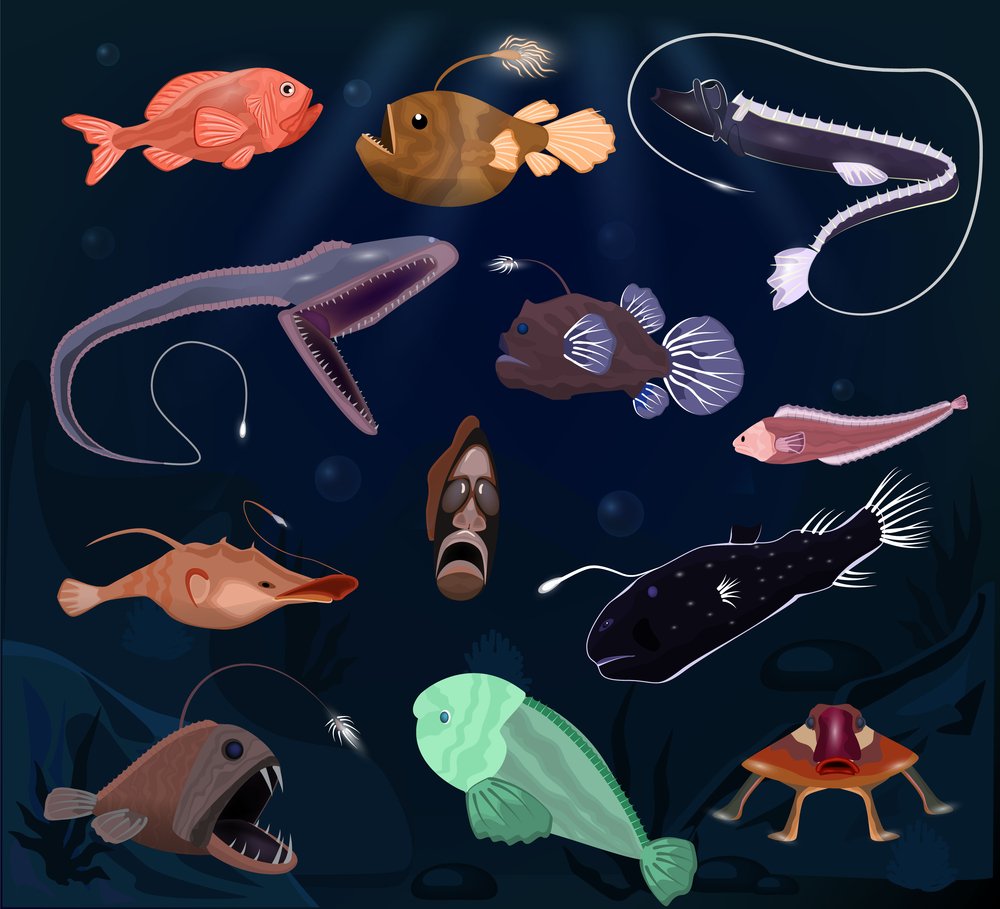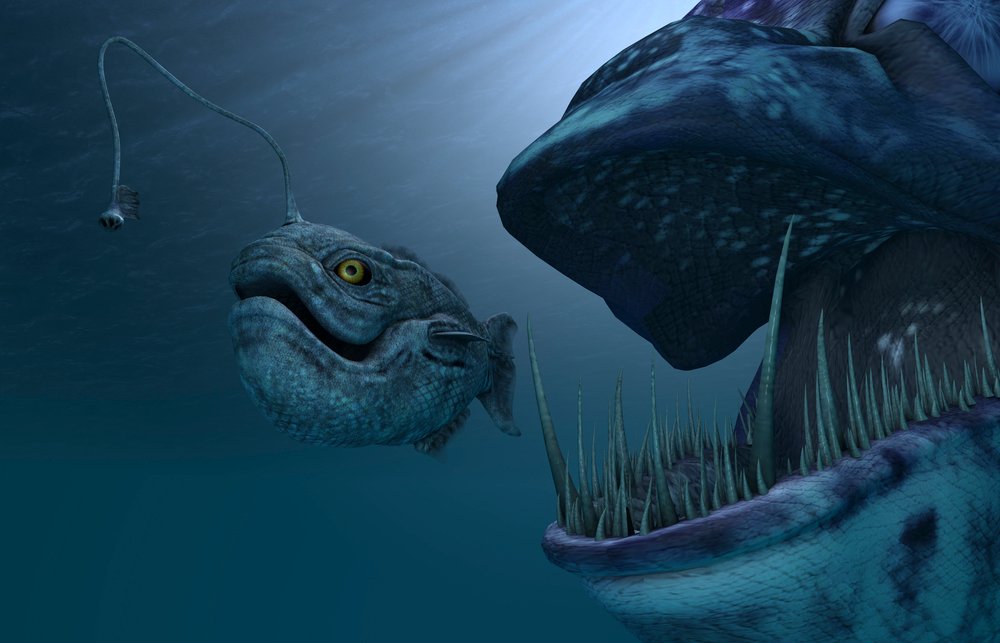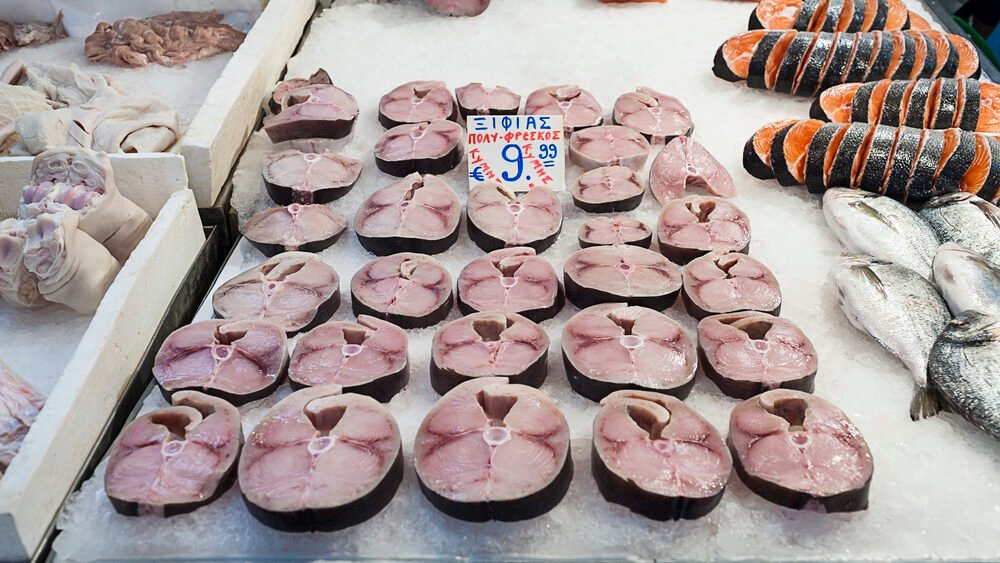Delicious Deep Sea Fish to Eat: Try These Tasty Saltwater Fish Treats
Deep sea fish can be an absolute delight for your tastebuds! From Tilapia to Barramundi, these ocean-dwelling delicacies will tantalize your taste buds with unique flavors and textures.
Popular saltwater fish that are great for eating include halibut, grouper, salmon, and tuna – each type of fish offering its unique flavor and texture.
Halibut is known for its mild yet savory flavor, tuna is often enjoyed raw as sushi or cooked, grouper is flaky and delicate, and salmon is rich and flavorful.
With so many delicious options available, you can try baking, grilling, broiling, poaching, or pan-frying – there’s something to satisfy everyone’s taste buds. Enjoy a meal full of these tasty treats with friends and family!
What is Deep Sea Fish?

Deep Sea Fish are those species that live at depths of more than 600 meters, or 2000 feet, but can live as far down as 8,370 meters, or 27,500 feet. These creatures have adapted to the deep sea’s extreme pressure and low temperatures and often have unique physical features compared to near-surface fish. Examples of deep-sea fish are lanternfish, anglerfish, viperfish, and goblin shark.
Fun fact: Edward Forbes theorized in the 1840s that no life could survive below 600 meters because there would be high pressure, no light, and low temperature. He was incorrect.
Behavior and Diet
Deep sea fish are an integral part of the ocean ecosystem. In the deep sea, there is no photosynthesis, and food is scarce, so the deepwater fish rely on marine snow, dead algae, dead animals, and dead plants to survive. A dead whale sinking to the ocean floor is a rare feast.
Some fish are not active predators but conserve energy by waiting for prey to pass them by and then ambush them.
Others species may swim to the ocean surface at night to hunt smaller prey and return to the deep before dawn to digest their food. If they remain at the surface after sunrise, larger predators may catch them.
Habitat and Survival

Deep sea fish have adapted to survive in an incredibly harsh and hostile environment. With oxygen levels significantly lower than at the surface and pressures up to 380 times higher, it is truly remarkable that deep-sea fish can survive.
With such high pressure and scarce food, it is also a struggle for these creatures to find enough to eat. The darkness and cold temperatures of the deep sea also add to the difficulty of survival.
To counter these conditions, some deep sea fish have developed bioluminescence to create light, attract prey, or scare away predators.
Additionally, some fish have big eyes to take in all the available light, while others have developed blindness due to the darkness. All of these adaptations prove the incredible ability of marine life to survive.
Nutritional Benefits of Eating Deep Sea Fish
I have great news for you! Eating deep sea fish can be a great way to get all the essential nutrients your body needs to stay healthy and robust, as they are an excellent protein source, which is vital for many functions in our body. Protein repairs muscle tissue and are the building blocks of a well-functioning body.
You will also get a hefty dose of omega-3 fatty acids with every serving. Omega-3 is vital for brain development and has many benefits, such as reducing inflammation, promoting heart health, and lowering “bad cholesterol” levels. Scientists have theorized for decades that one of the reasons the Okinawans in Japan live so long is their diet, which is full of seafood and rich in omega-3.
Also, fish is an excellent source of essential vitamins and minerals. Vitamin D is important for bone health, absorbing calcium, keeping your immune system strong, and regulating hormones. Vitamins A, B, and E are all critical for healthy skin, eyes, and hair.
Eat fish to get the nutrients your body craves.
Types of Deep Sea Fish Commonly Eaten

Deep sea fish are an essential part of many cuisines around the world, and here are some examples:
Bigeye ocean perch, mirror dory, and alfonsino are popular types of deep sea fish commonly eaten.
Bigeye ocean perch are found off the coast of Australia, in depths of 250-800 meters, and are delicate and flaky with a sweet taste. You can steam it with soy sauce, oyster sauce, peanut oil, ginger, shaoxing, sesame oil onions, and coriander leaves, and serve it with jasmine rice and broccoli or bok choy.
Mirror dory lives in depths of 50-600 meters. You can cook, pan-fry, bake or roast it.
Alfonsino is a famous redfish, often eaten raw, fried, grilled, or steamed and served with cabbage, potatoes, and bacon. Other types of deepwater fish are black cod, sablefish, and eel.
Additionally, deep sea crabs, such as giant spider crabs, are sometimes fished as bycatch and can be served with spaghetti.
Recipes for Cooking Deep Sea Fish

Cooking deep sea fish is no different than cooking regular fish. Pick a recipe, switch your deepwater fish with the fish in the recipe, and keep the rest the same. Before you choose a recipe, you should compare the fish meat’s texture and taste to the fish in the recipe you are using.
Grilled Sea Bass with Mango Salsa Recipe
- Preheat your grill.
- Season the sea bass with salt and pepper.
- Place it on the grill.
- Cook for about 4 minutes per side or until cooked through
- Prepare the mango salsa by mixing chopped mangos, red onion, jalapeno, cilantro, lime juice, and olive oil.
- Serve.
Baked Salmon with Herbs Recipe
- Preheat the oven to 350°F or 175°C.
- Place the salmon on a baking sheet.
- Season the fish with salt and pepper.
- Sprinkle with herbs like oregano, thyme, rosemary, or dill.
- Bake for 10-20 minutes until the meat flakes easily.
- Serve and enjoy.
Poached Halibut with Lemon-Caper Sauce Recipe
- Boil water and add salt
- Add the fish
- Simmer for 8-10 minutes or until the fish is cooked.
- Scoop the fish from the water and set it aside on a plate.
- In another pan, melt butter over medium heat
- Add lemon juice, capers, and parsley.
- Simmer for a few minutes
- Pour the sauce over the fish
- Serve with vegetables and potatoes.
How to Tell If a Deep Sea Fish Is Fresh
Here are a few key things to look out for when buying fresh deep sea fish:
- Make sure the fish’s eyes are clear and bright. Cloudy or sunken eyes usually indicate the fish is not fresh. Some deepwater fish have huge, weird, creepy eyes, so they may look different from what you’re used to.
- Check the gills. They should be bright pink and not slimy or discolored.
- The flesh should be firm and resilient to the touch. If it’s mushy, it’s likely not fresh.
- Finally, give the fish a sniff. It shouldn’t have a harsh or fishy odor but a mild, fresh scent.
If the fish passes these tests, it’s likely fresh and ready to eat.
Health Risks of Eating Deep Sea Fish
There are health risks associated with eating deep sea fish. These fish may have high mercury levels, PCBs, or other hazardous contaminants and may carry parasites or bacteria that can cause illnesses.
Ensure that the fish you’re eating has been appropriately handled, stored, and cooked to reduce the risk of foodborne illnesses. Avoid some types of deep sea fish, like swordfish and sharks, since their mercury content is high.
Eating deepwater fish can be a delicious part of your diet but may have associated risks.
Different Cooking Techniques for Deep Sea Fish

Pan-frying
Pan-Frying is an easy and minimal way to cook. Oil or butter is necessary for pan-frying. Coat the fish lightly in oil and season with salt and pepper. Heat the pan over medium-high heat and place the fish in. Cook for 3-4 minutes on each side or until the fish is golden brown.
Broiling
Broiling is another way to cook. Preheat the oven for seven to ten minutes to a high broil setting, and place the fish on a greased baking sheet on a tray. Brush the fish with melted butter, oil, or a marinade. Broil for about 10 minutes or until the top is lightly browned.
Poaching
Poaching keeps fish moist and tender. Fill a large pot with water and bring it to a simmer. Season the liquid with herbs and spices, then add the fish. Simmer for about 10 minutes or until the fish is cooked through.
Grilling
Grilling gives fish a smoky and crispy flavor. Preheat a grill to medium-high heat. Brush the fish with oil or marinade and season with salt and pepper. Place the fish on the grill. Cook for at least 3-4 minutes on each side or until the fish is cooked and has grill marks.
How to Store Deep Sea Fish

After you buy the fish at the store or market, use an insulated container with a cold pack to transport it home from the store to your home.
As soon as you get home, remove the fish from the packaging and rinse it off in a bowl of cold water. Grab a paper towel, pat the fish dry, and place it on a plate. Wrap the fish in plastic wrap or store the fish in an airtight container.
If you want to freeze the fish, put it in an airtight package or a freezer bag, and place it in the freezer. The evening before you want to cook the fish, take it out of the freezer and place it in the refrigerator to let it thaw overnight.
Seasonal Availability of Deep Sea Fish
Most fish are seasonal, with certain species only available during certain months.
For example, popular deepwater fish like monkfish, halibut, and haddock are available throughout the year, but peak season is from June to October.
Other species, like flounder and skate, are available the whole year but are more common in late summer to early fall.
Sustainable Fishing Practices for Deep Sea Fish

It’s crucial to follow sustainable fishing practices to preserve deep sea fish, such as not targeting vulnerable species, reducing bycatch, and protecting vulnerable habitats.
Fishing fleets can use fishing gear with a high selectivity rate, targeting specific species to reduce non-target species, which will lower bycatch. One example is not using trawl nets that may catch turtles, squid, crabs, rays, and unwanted fish. Bycatch gets sorted out and thrown back into the ocean again, but they often die while in the boat.
Regional fishing organizations should lobby to protect highly vulnerable areas and habitats to ensure the survival of deep sea fish.
Lastly, catch limits or quotas can be set, monitored, and enforced to prevent overfishing. Implementing these practices will make it easier to protect and sustain deep sea fish populations.
Frequently Asked Questions
What do deep sea fish eat?

Since food is very scarce in the deep, the fish that live there eat or scavage almost anything available to them.
Their food might be other fish or scraps sinking in the ocean, such as dead plants, dead fish, or dead marine mammals.
Are deep sea fish blind?

Scientists believe many species of deep sea fish are blind because they have evolved in the darkness and don’t need to see.
Other fish have enormous eyes, believed to absorb light better to navigate the darkness.
How deep can deepwater fish live?

The deepest deep sea fish is the Mariana Snailfish, which lives at 8000 meters or 26200 feet in the trenches off the coast of Guam.
There may be fish that can live in depths even deeper than this, as scientists have yet to explore the depths of the ocean trenches due to the high pressure.

